Vimar Flashlights, batteries and acessories


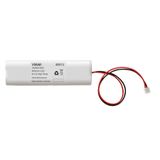
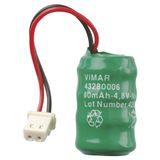
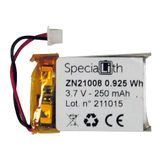
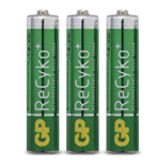
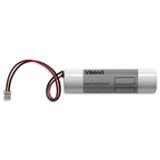

Install crews spec flashlights like any other tool: by lumen class, beam geometry, runtime at a defined output, robustness (IP/IK/drop), and charging logistics that don’t slow night shifts. The Vimar range splits into work lights for close tasks, spot beams for inspection, and compact EDC units for panels and risers—each with ANSI FL1 data, honest thermal behaviour, and spare-cell strategies that match your HSE rules.
vimar flashlights and batteries assortment and use cases
Under vimar flashlights and batteries you’ll find three practical families: compact pen and right-angle lights for cabinets and MCCs (150–400 lm, high CRI for wiring colours), inspection spotlights with tight candela peaks for ceiling voids and façades (10–20 kcd, 600–1200 lm), and area work lights with wide optics and magnets/hooks for hands-free use (800–2500 lm). Most SKUs carry ANSI FL1 runtime curves at 21–22 °C and stepped thermal regulation rather than abrupt throttling, so crews know what light they’ll still have at the end of a shift.
vimar led flashlights optics, bins, and durability classes
The vimar led flashlights portfolio uses neutral-white emitters (4000–5000 K) for true wire colour recognition, with ≥90 CRI options for panel interiors. Optics include TIR for uniform beams in tight rooms and smooth reflectors for throw. Bodies are anodised aluminium with IP54–IP68 and impact 1–2 m; switches are sealed, and tail stands support vertical work. Drop and ingress are printed to ANSI/IEC marks, not “marketing water resistance,” which matters when you’re writing method statements.
vimar rechargeable torches charging standards and fleet logic
For depot logistics, vimar rechargeable torches support USB-C PD or docking cradles with 12/24 V vehicle leads. Charge management is CC/CV with cell NTC sensing; typical full charge 3–5 h on 18650/21700 packs. Cradles expose screw centres and keyed DC jacks so they mount in vans or on panel doors; indicators show charge and fault. Where lone-worker policies apply, timed step-downs are documented so runtime forecasting is predictable.
vimar portable lighting task lights and site accessories
Area units in the vimar portable lighting group deliver 1000–4000 lm with 120° optics, swivel frames, tripod threads, and rubberised bumpers. IP54/IP65 bodies tolerate washdown; some SKUs accept both mains and DC (battery sleds) for generator changeovers. Diffusers reduce glare around polished floors, and hooks/magnets are rated with pull values so you can specify safe mounting points near switchboards.
vimar flashlight accessories mounts, filters, and service kits
To keep kits together, vimar flashlight accessories include helmet clips, panel-edge clamps, belt holsters, traffic wands, diffusers, and colour filters for smoke or fog. Service packs carry O-rings, switch boots, and lens windows; magnetic charging leads ship with strain-relief sleeves. All mounts list screw sizes and torque so nothing rattles loose in plant rooms.
vimar battery packs chemistries, safety, and swappability
The vimar battery packs catalogue covers Li-ion 18650/21700 with UN38.3 certification and protection PCBs, plus AA/AAA Eneloop-class cells for cold rooms. Packs quote genuine Wh, not nominal mAh, and publish cycle life at depth-of-discharge. Fleet managers get replaceable packs with keyed connectors; lockable sleeves prevent cell mix-ups between intrinsically safe areas and general works.
vimar handheld lights control UX and photometric notes
Operators favour simple UIs; vimar handheld lights default to two or three output steps plus momentary turbo, with long-press lockout for pockets. Beam specs list centre/edge candela and spill angle, so planners can predict lux at 5–15 m for inspection points. PWM frequency clears 20 kHz to avoid camera banding during documentation photos.
Technical specifications and standards that matter
ANSI FL1 for lumen, candela, runtime, impact, and water ingress; IP per IEC 60529; chargers to IEC 62368-1; cells with UN38.3 transport papers. Typical CCT 4000–5000 K; CRI 70–95 per model; thermal regulation via case-temperature sensing with tc marks on area lights; operating −10…+40 °C. Magnetic bases state pull force; tripods follow 1/4-20 UNC. Beam files (IES) are available on inspection heads when you need calculated lux at maintenance points.
Applications and compatibility
Night maintenance in hotels and hospitals benefits from high-CRI pen lights for wiring ID; logistics uses tripod-ready area heads for mezzanines; façade teams carry tight-beam inspection units for bracket checks. Charging cradles mount in service vans and plant rooms, and USB-C keeps spares universal across crews.
Selection criteria for B2B buyers
- Define task distance and target lux, then choose lumen/candela and optic.
- Fix runtime at the required output (not moonlight mode); align with shift length.
- Choose charging model: USB-C for mixed fleets, dock for vehicles and wall bays; confirm MTBF of cables/cradles.
- Set durability: IP/impact, solvent resistance for cleaning, and glove-friendly UI.
- Decide battery policy: replaceable cells for long nights or sealed packs where audit simplicity matters.
How Bankoflamps supports flashlight fleets without downtime
We build a crew-specific kit list—light type, lumen step, expected runtime, charger style, and spare-cell policy—then barcode it so stores can replenish against work orders. Quotes return quickly with real-time EU stock; we hold allocation by team and vehicle rather than by SKU alone. Shipments arrive van- or floor-kitted, with cradles, leads, mounts, and service seals in the same carton and UN38.3 paperwork taped inside for audit. During rollout we provide measured ANSI FL1 samples for your risk file, and our support desk tracks charger failures and cable attrition so you can adjust spares before the next block of night work.